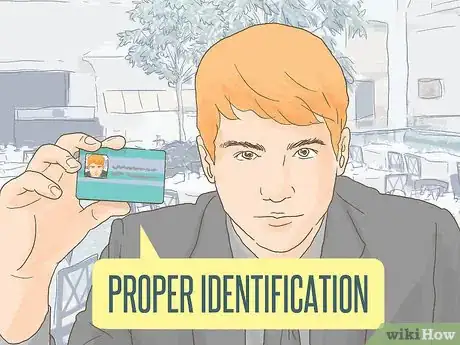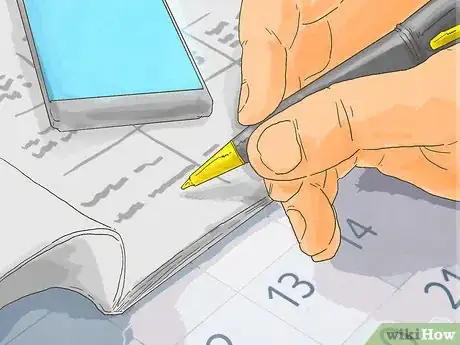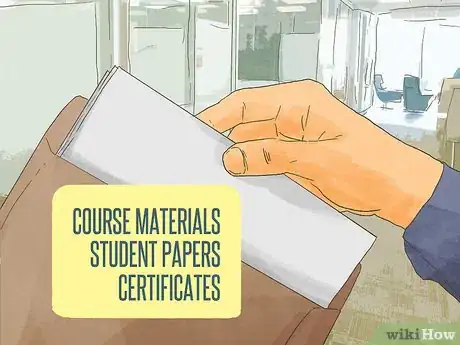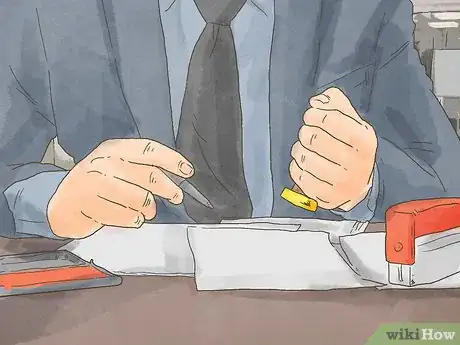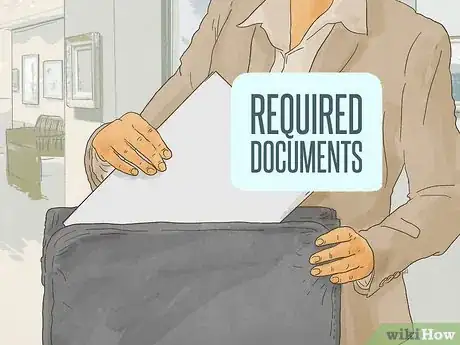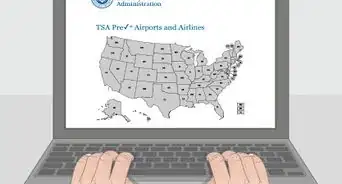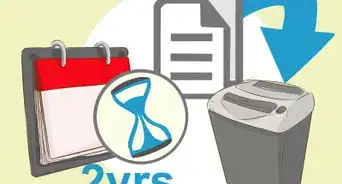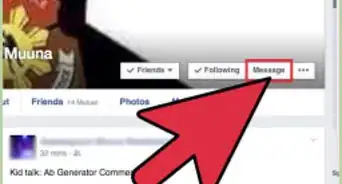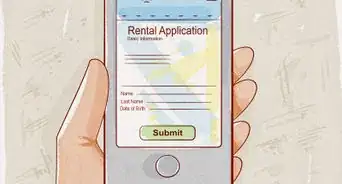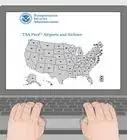X
wikiHow is a “wiki,” similar to Wikipedia, which means that many of our articles are co-written by multiple authors. To create this article, 15 people, some anonymous, worked to edit and improve it over time.
This article has been viewed 87,230 times.
Learn more...
A dossier is a collection of information and documents about a specific individual. If you are a civilian, you might need to make a dossier if you're an investigative journalist, a college level teacher, or looking to adopt a child. The process is long, and can be exhausting, but giving yourself adequate time and knowing all the proper protocol can help you successfully complete a dossier.
Steps
Method 1
Method 1 of 3:
Compiling an Investigative Journalism Dossier
-
1Identify the person being investigated. If you work in journalism, you might be asked to compile a dossier on a person of interest in an ongoing investigation. The first step to the process is identifying the individual.
- Make sure you have the correct spelling of the person's first, middle, and last time. Small spelling errors can make a big difference when seeking out information.[1]
- Try to find a date of birth, or at least a range of time in which the person was likely born. This makes finding certain documents easier down the road.[2]
-
2See what's been written about the person. If you're writing an article about an individual, you do not want to rehash information that's already out there. Search online and through newspapers, magazines, and tabloids for existing stories about the individual. Not only does this prevent you from publishing a redundant piece, it adds to the array of information you have on the individual.[3]Advertisement
-
3Gather information through public records. Use public records to your advantage to build your profile. Using a variety of outlets, scan public records for important information.
- Local records are a good start, even if the individual isn't originally from your location. Go to city hall, the county clerk's office, and any local branch of state and federal offices. Look through permits, power of attorney, liens, building permits, deeds, licenses, driving records, and anything else that turns up.[4]
- Look through court records. Any history of court appearances can be found online, but you might have to go to the court house to actually view the records.[5]
- Check with local police and sheriff's offices for any past criminal activity. Also check local, state, and county jail records. Some information may be hard to find, depending on your state's open record laws.[6]
-
4Look up the individual's employment history. You should look into the individual's employment history to check for any surprises or inconsistencies.
- Make direct phone calls to past and current employers. Ask for employment verification and if they ask why you're calling, simply tell them the truth. Usually, whoever you're speaking to will comply.[7]
- You can see if you can get a copy of the individual's resume through past and current employers.[8]
-
5Verify any licenses. Oftentimes, the person you're investigating will be in a professional field that requires a license. He might be a dentist or a psychiatrist, for example. Try to verify that license to check for fraud. Also, investigate every claim on his resume, such as where he went to school, grants and awards he claims to have received, and any certificates he lists.[9]
-
6Reach out to people associated with the individual. Compile a list of friends, enemies, neighbors, spouses, family members, former lovers, and other people who've had contact with the individual. Contact them and ask questions relevant to your investigation.[10]
Advertisement
Method 2
Method 2 of 3:
Assembling a Teaching Dossier
-
1Learn the fundamentals of a teaching dossier. A teaching dossier is important if you teach at the university level. Oftentimes, a dossier is required to move up for promotion or tenure. It is a portfolio of papers, documents, and other materials designed the illustrate the scope of your teaching career. A teaching dossier should do the following:
- It should describe your approach to teaching, as well as your philosophy as an educator.
- It should provide evidence that your teaching outcomes have been successful.
- It should also document that you have made efforts to improve as a teacher over the years.
-
2Set a timeline for yourself. Compiling a dossier takes time. In order to create a successful dossier, you need to establish a timeline.
- A minimum of two months should be spent on your teaching dossier. You won't be working on the dossier this entire time, but should be spending 4 or 5 nights a week working on compiling, writing, and organizing your materials.
- Be proactive while teaching. Always be on the lookout for potential materials to add to your dossier. If an assignment works very well to illustrate a point, save a copy of the assignment sheet and make copies of exemplary student work. If a class activity goes over well, have a colleague sit in during class and write a brief assessment for you.
-
3Collect dossier material. Each semester you teach, you should be working on collecting relevant dossier material. Relevant material is anything that speaks to your skill as an educator.
- Have a folder or box in your office where you save important documents that you may want to use when compiling your dossier. Try to have some system of organization. For example, student papers can be filed in one section while assignment sheets are filed in another. This will make materials easy to sort when the time comes to compile your dossier.
- While the semester is in progress, you should be gathering all course materials, such as syllabi and handouts, feedback you've provided for student work, any TA training material, student work that shows students have met your teaching goals, mid-semester evaluations, emails from students or colleagues regarding your teaching, and any of your own notes or journal entries in regards to your course.
- After the semester ends, add raw data from course evaluations, students' final grades, and any notes you made about altering the course.
- You should also be continually gathering information unrelated to your specific course. Save materials from any teaching workshops you attended, information about student outcomes and activities (e.g., a student of yours being accepted into a graduate program, publications of former students, internships, professional jobs, etc.), any evidence you've been involved in professional organizations related to your field, and information from any non-university teaching experiences, such as public lectures.
-
4Prepare a statement of teaching philosophy. In addition to including compiled materials, you will need to write a statement of teaching philosophy. This is a 1 to 2-page document that outlines your goals and values as an educator.
- The content of a teaching philosophy can be laid out in a variety of ways. There is no specific format that needs to be followed. However, all teaching philosophies should convey your idea of good teaching, what you hope to achieve teaching, examples of your teaching strategy that demonstrate its effectiveness, and reflections on how you can further develop as a teacher.
- The tone should be relatively informal although mentioning scholars who've been particularly helpful to you as a teacher can help. The document should be typed in a legible font with space between paragraphs.
-
5Select documents for evidence. A dossier needs to provide evidence that your teaching methods are effective. The evidence sections are broken down into three parts.
- Evidence of Teaching Effectiveness shows your approach to teaching is beneficial to students. You should include a summary of your course evaluations and an accompanying narrative, written by you. The narrative can explain any inconsistencies and help contextualize your scores in regards to your teaching. In addition to evaluations and your narrative, you might also want to include peer evaluations, student outcomes, and examples of student work.[11]
- Evidence in Leadership of Teaching should speak to your ability to improve the quality of teaching beyond your own classroom. This is material that demonstrates you've made an effort to be involved in the teaching community and have collaborated with peers. Documents to include are materials from workshops and presentations, teaching materials you've shared with others, information regarding your participation in mentorship programs, any funding or grants you've received, publications on scholarly research regarding teaching, and evidence of any leadership positions you've held for teaching organizations.[12]
- Evidence of Professional Development shows you're committed to improving and adapting your teaching throughout your career. You should include a list of any workshops, seminars, or courses on teaching you've participated in, and information regarding any mentorship or advice you've sought from peers and colleagues. You might also want to include your own narrative description of your career and goals, and how you've sought self improvement over the years.
-
6Choose items to include in the appendix. Items included in your dossier's appendix should compliment the claims you've made in your teaching philosophy and evidence section. A wide array of information and documentation can be included.
- Some possible materials to include are student papers, course materials, feedback on teaching from students and colleagues, certificates of completion for professional development seminars and teaching courses, and any teaching research or scholarship you've participated in.
- These documents should not speak on their own. You should provide a brief, 1-2 paragraph statement that explains how said documents relate to your earlier claims.
-
7Get feedback on your dossier. Once you've completed a draft of your dossier, have a colleague in your department review it. If possible, find someone who has reviewed dossier materials for professors up for promotion or tenure before. Feedback is invaluable. Not only can your colleague provide you with information on what to keep and what to cut, many academics get "typo-blind" when working long hours. A colleague can assure your teaching philosophy and narrative statements are free of grammatical and spelling errors as well as dropped words.
-
8Avoid common pitfalls. There are a variety of common mistakes people make when compiling a dossier. As you work, know what to avoid.
- Dossiers sometimes lack coherence. You may be asking those reviewing the documents to make too many connections themselves in regards to how the materials are related. Make sure your teaching philosophy, evidence, and appendix materials all speak to your central goals as an educator.
- Do not include too much information. A dossier should be expansive but it should not be exhaustive. Be selective in what you include and only include information that speaks to a few central goals and values.
Advertisement
Method 3
Method 3 of 3:
Making an Adoption Dossier
-
1Understand documents in an adoption dossier need further review. Before completing your adoption dossier, you'll have already compiled a variety of documents for other parts of the adoption process. Most of these documents will go into your dossier. However, these documents cannot simply be thrown in an adoption dossier. They all need to be notarized, certified, apostilled, and authenticated.
- To get a document notarized and then certified, you need a Notary Public. Notary Publics are officials appointed by the state to serve as impartial witnesses to a variety of acts in order to prevent fraud. You can contact a Notary Public through the state department and have them notarize your documents and certify they are not fraudulent. Make sure you know when their term expires. You need someone whose term lasts at least a year.[13]
- You will then need your documents reviewed by the governmental body that registered the Notary. An apostille is a seal said government body puts on a document to confirm that your Notary's signature and license are valid.[14]
- Once a government official has looked at the Notary's signature and the apostille seal, they will attach a piece of paper to your document with their authorization and signature. This means your documents are notarized, certified, apostilled, and authenticated. They are ready to go into your dossier.[15]
-
2Know what documents you need. Dossier requirements vary from agency to agency and state to sate. However, most dossiers should include the following:
- Health information about the adoptive parents
- Financial information
- Adoption petition and post placement agreement from your adoption agency
- Copies of birth certificates and marriage licenses (single parents only need their birth certificates)
- Any forms related to confirming your citizenship
- Employment verification
- Certificates regarding a completed home study
- Criminal background check results
- Copy of your most recent Federal Tax Return
- Copies of your passport
- Photographs of your family, friends, pets, and house[16]
-
3Decide whether to compile the dossier yourself or hire someone. Compiling an adoption dossier is a stressful process. Small mistakes can result in the delay of an adoption, and many parents would prefer to hire a professional.
- Hiring someone to complete a dossier for you can cost $800 to $1,000. Many companies specialize in compiling dossiers for prospective adoptive parents. Your adoption agency should be able to recommend a company for you.[17]
- While you can compile a dossier yourself, many parents feel overwhelmed by the prospect of assuring they have proper documentation and authorization. Easily overlooked mistakes can translate to major issues in regards to successfully completing the adoption process. However, if you feel confident in your organizational skills you might want to save your money as adoption fees are already expensive.[18]
Advertisement
Warnings
- Mistakes in dossiers, especially those related to adoption and investigative journalism, can have big consequences. Be careful.⧼thumbs_response⧽
Advertisement
References
- ↑ http://www.mediahelpingmedia.org/training-resources/investigative-journalism/265-10-tips-for-investigative-journalism
- ↑ http://www.mediahelpingmedia.org/training-resources/investigative-journalism/265-10-tips-for-investigative-journalism
- ↑ http://www.mediahelpingmedia.org/training-resources/investigative-journalism/265-10-tips-for-investigative-journalism
- ↑ http://www.mediahelpingmedia.org/training-resources/investigative-journalism/265-10-tips-for-investigative-journalism
- ↑ http://www.mediahelpingmedia.org/training-resources/investigative-journalism/265-10-tips-for-investigative-journalism
- ↑ http://www.mediahelpingmedia.org/training-resources/investigative-journalism/265-10-tips-for-investigative-journalism
- ↑ http://www.mediahelpingmedia.org/training-resources/investigative-journalism/265-10-tips-for-investigative-journalism
- ↑ http://www.mediahelpingmedia.org/training-resources/investigative-journalism/265-10-tips-for-investigative-journalism
- ↑ http://www.mediahelpingmedia.org/training-resources/investigative-journalism/265-10-tips-for-investigative-journalism
- ↑ http://www.mediahelpingmedia.org/training-resources/investigative-journalism/265-10-tips-for-investigative-journalism
- ↑ http://teaching.utoronto.ca/teaching-support/documenting-teaching/teaching-dossier/evidence-of-teaching-effectiveness/
- ↑ http://teaching.utoronto.ca/teaching-support/documenting-teaching/teaching-dossier/evidence-of-leadership-in-teaching/
- ↑ http://adoption.com/dossier
- ↑ http://adoption.com/dossier
- ↑ http://adoption.com/dossier
- ↑ http://adoption.com/dossier
- ↑ http://adoption.com/dossier
- ↑ http://adoption.com/dossier
About This Article
Advertisement
